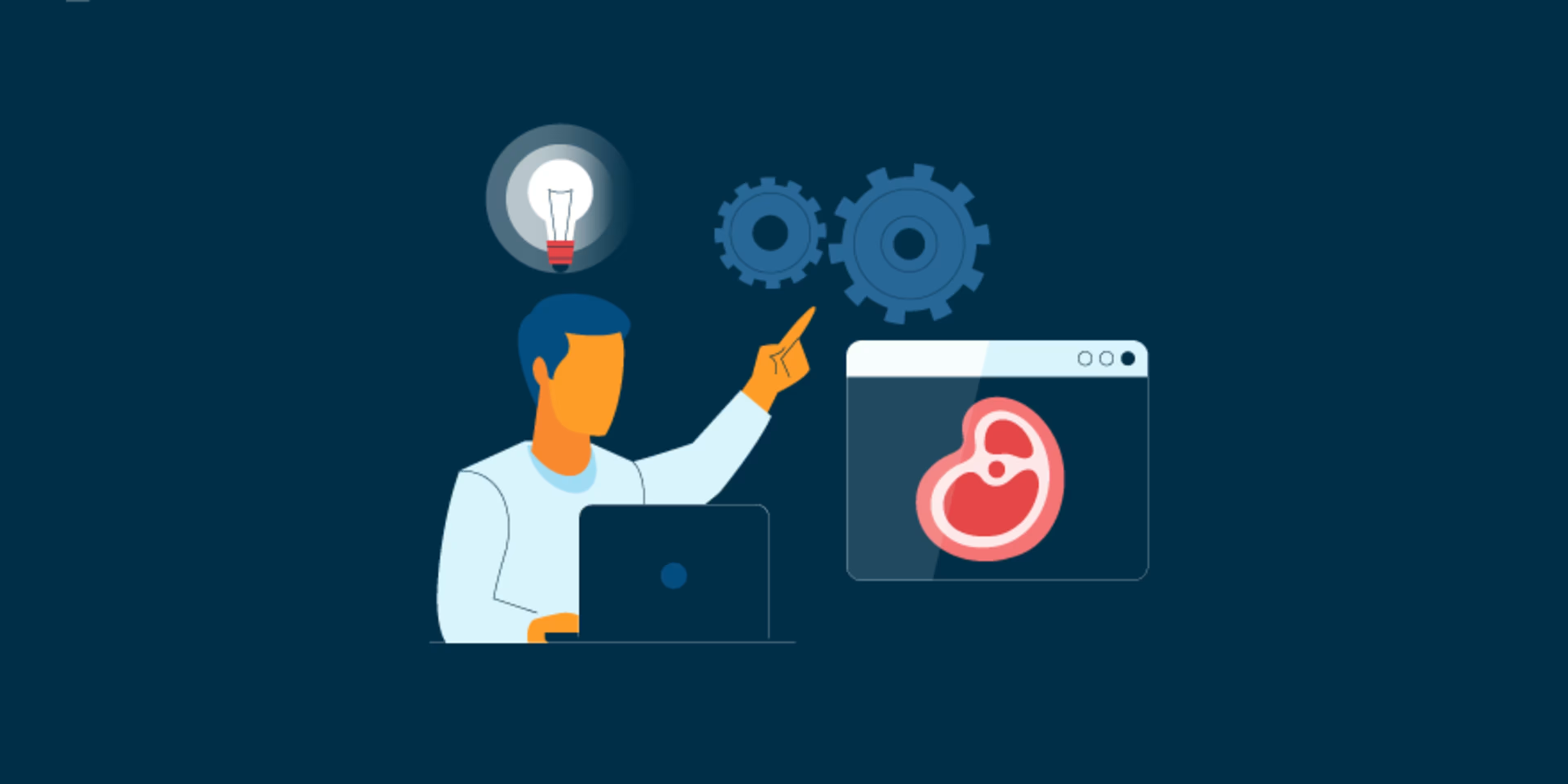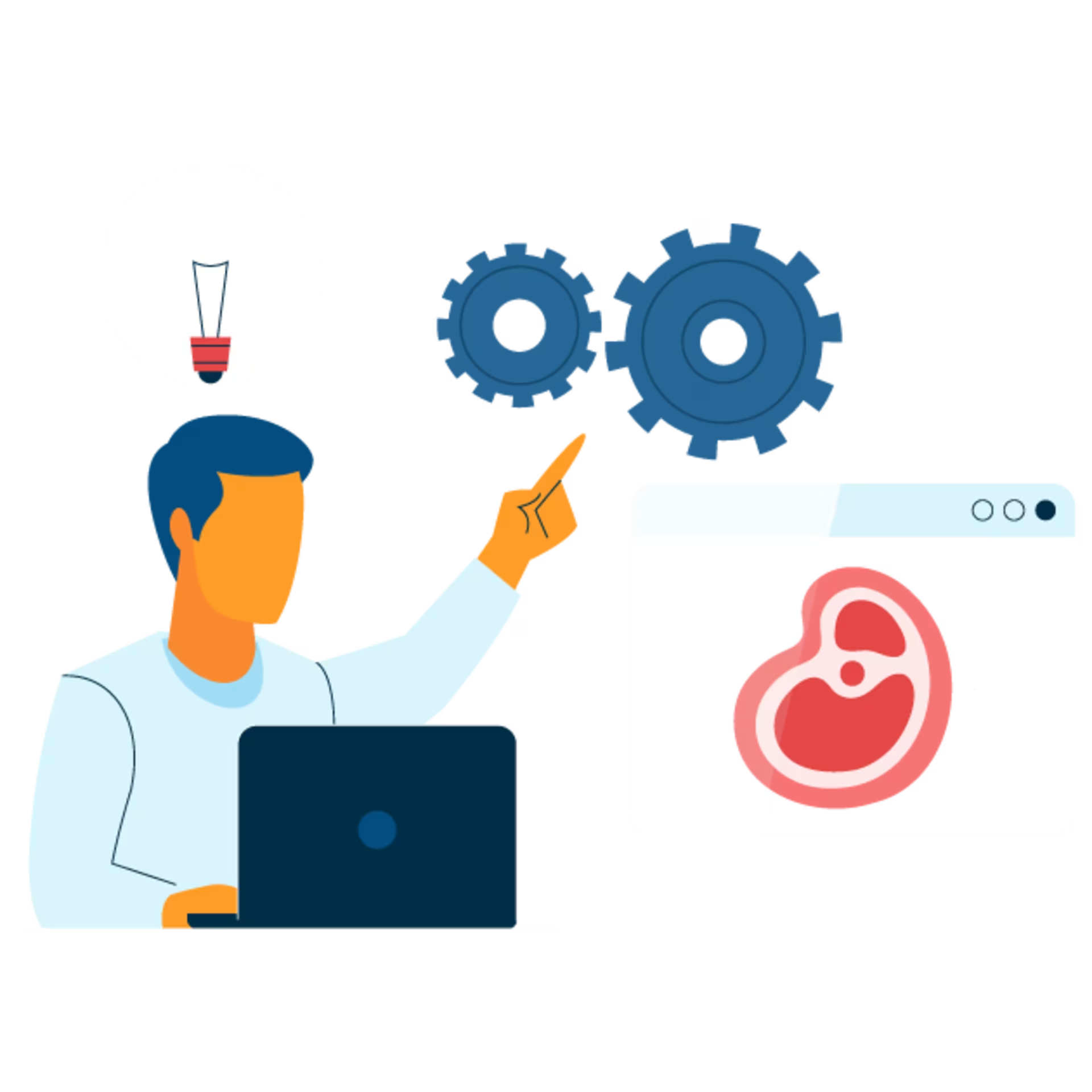With the pandemic, James Jackson Leach had to suddenly close the doors to his family's butcher shop. Next thing he knew, they were receiving more orders than they could handle. He turned to software to stay afloat.

Longhorn Meat Market has been in James Jackson Leach's family since 1892. After 128 years, the business is not only a butcher shop but a longstanding part of the local community in Austin, Texas.
“We have customers who have been shopping with us for 50 years at this location,” Leach said. “We take pride in that.”
The shop has a reputation to maintain and continues to hold itself to the standards it was founded on: good, old-fashioned customer service and hospitality.
When Leach took over the company in 2017, it was still running on a paper ledger system that worked, with 70% of its revenue coming from wholesale and 30% from retail. Because Longhorn was well-established in the community and relied heavily on in-person customer service, it didn’t need technology. Customers entered and told the butcher what they needed, and then the butcher filled the order.
Everything changed when the pandemic not only pushed Leach to close Longhorn’s doors to prevent the spread of the novel coronavirus but also triggered restaurant closures throughout the city, reducing wholesale orders.
Suddenly, Longhorn’s no-frills, “old school” business approach collapsed, and Leach knew he had to pivot—and quickly—if he wanted to survive the crisis.
It took Leach 30 days to find a solution that ultimately transformed his business, allowing Longhorn to not only survive but grow 27% in spite of a crisis, while remaining true to its century-old values.
Here’s what Leach did to pivot his business to eCommerce and how software can help transform your business too.
4 steps to transform your business in the face of disruption
1. Pivot and (if at first you don’t succeed) pivot again
Leach said that at the beginning of the pandemic, every day felt like a pivot. Customers were lined up outside the building and had to wait two hours to get their orders, which was unacceptable to him.
“We knew we had to change the way we operate in order to give the customers what they need more quickly so they can get on with their lives and back home with their families,” Leach said.
First, he tried taking orders by phone, but the phones rang nonstop, making it impossible for his staff of 17 to answer every call. Then he switched to email, but this proved to be worse than the phone system.
“Email was a back and forth, and it became a nightmare of a conversation back and forth to satisfy one customer,” Leach said.
Taking orders by phone and email wasn’t working, but Leach didn't give up—his family’s business and legacy were at stake. He decided to pivot once more to eCommerce software, which he says was the best decision he ever made and proved to be the key to Longhorn’s sustained success.
What you can do: To figure out what works, sometimes you need to figure out what doesn’t. Some businesses may choose to adopt a phone system while others choose email or an eCommerce platform. Regardless of which you choose, software can help.
2. Software is your friend—and so are peer reviews
Leach always thought about breaking into eCommerce, but never acted on it. The challenges presented by the pandemic, however, gave him the push he needed to go digital.
He decided to research eCommerce solutions, relying heavily on peer reviews to inform his decision. These reviews were his ally as he researched and compared different tools before choosing Shopify.
“It wasn’t until I woke up the next morning [that I] realized that this would change everything for our company,” Leach said.
And the decision to digitize Longhorn Meat Market did, in fact, change everything. Longhorn Meat Market has since been able to attract new customers, capture data that helps it better understand its customers, and grow its revenue by 27%.
Software can help you transform your business, too, but you need to make sure you adopt the right solution that fits your business needs. Peer reviews can help.
What you can do: Researching software can be overwhelming with all the options out there. Peer reviews help you cut through all the noise to find the solution right for your business and build your perfect tech stack.
3. Take one step at a time
Dramatically changing your business may seem overwhelming, but you don’t have to make all the changes at once.
While it’s true that Leach took his business online overnight, he also did it gradually, starting with only four options for eCommerce customers to choose from.
By starting small, Longhorn Meat Market was able to gradually acclimate to eCommerce. Now, Longhorn Meat Market offers more than 100 items for customers to choose from on its website.
Similarly, you can start with a limited selection of your bestsellers, and work your way up from there.
What you can do: Change may need to be quick but it can also be gradual. Choose the products and services most important to your customers, and start from there.
4. Reimagine your business offerings to maximize what’s possible
Adopting eCommerce software was something entirely new for Longhorn Meat Market, but Leach also considered something else that could be easily implemented: offering home deliveries.
Longhorn Meat Market has been offering wholesale delivery for decades, so Leach thought: why not offer customers home deliveries in light of social distancing recommendations?
Now, they deliver to customers throughout the city, expanding access to their business to more neighborhoods in Austin.
What you can do: Some changes can be adaptations of services you already offer, based on customer needs. For example, if you offer food delivery to some clients, expand this service to more areas and clients. If you sell a few products through eCommerce, try adding more products for your customers to choose from.
‘We’re never going back’
Moving forward, Leach predicts his next challenge will be finding the balance between eCommerce and brick-and-mortar operations as restrictions wane. Due to the influx of new customers, Leach says he’s looking into CRM software to better manage relationships with new customers and continue providing high-quality customer service.
Capterra can help you find the best software tool that fits your business needs. Our directories are full of peer reviews of different solutions and allow you to compare different options.
Whether you’re looking to completely transform your business or improve a specific business process, remember: You’ve got this. And we’ve got you.
Learn how your peers are overcoming adversity
Find out how others in the Capterra community are using technology to overcome challenges and learn from one another. We’re in this together.
